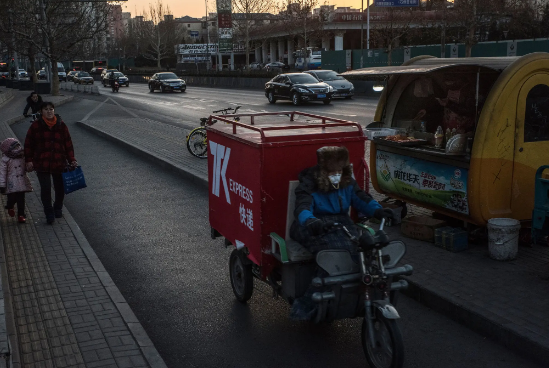我们通过发表他们的论文来表彰我们学生编辑大赛的前 10 名获奖者。这是陈瑞阳,16岁。

。。。吉尔斯·萨布里为《纽约时报》撰稿
这篇文章由来自上海世界外国语学院的16岁的陈瑞阳撰写,是学习网第八届年度学生社论大赛的前10名获奖者之一,我们收到了11,202份参赛作品。
Fast and Furious 2021: Sushi’s Dilemma
Zigzagging around corners, weaving through traffic, every second matters. It is neither a street race nor a 007 chase, but instead the haphazard journey of a sushi roll.
The streets of China have become filled with myriad colorfully clad delivery drivers racing noodles, sandwiches and soups across skyscraper-filled metropolises. While the everyday consumer may find these services convenient, or at worst complain about an over-tossed salad, most do not realize the true cost of their delivery. How much is that late-night snack really worth?
Strict time limits are the main concern for delivery drivers. The Chinese delivery app Meituan decreased the maximum time allowance from the original 50 minutes to 30, and even 20 minutes in certain regions. Time literally means money: Surpassing the limit even once can result in fines (which are paid to the firm rather than compensated to the consumers). Yet, beyond fines, there is often a greater cost. According to Pandaily News, one delivery worker is injured or killed in accidents every 2.5 days solely in Shanghai and, sadly, companies seldom provide insurance claims when their time limits lead to these consequences. Drivers are pushed to break traffic rules and risk their lives so mediocre sushi is not a minute late.
Furthermore, low wages and extensive working hours exacerbate these issues. According to The New York Times, companies in China take advantage of the inherent economic inequities between China’s large cities and less developed interior to offer extremely low compensation to migrant delivery drivers while demanding arduous hours. According to Beijing Jiaotong University and Alibaba, nearly one-quarter of drivers in Beijing work more than 12 hours a day, seven days a week. Yet these long hours and low pay are inherent throughout the global delivery industry. In places like the United States, advertised earnings of $22 per hour are largely exaggerated while workers complain that food delivery apps rarely give them all their tips.
Yet delivery apps and this model are only expanding, in part as a reaction to Covid-19. Under more desperate economic circumstances and with greater demand as people spend more time indoors, Uber alone gained 36,000 new drivers between March and November 2020, while the previous year’s total for all delivery app drivers in the United States was only 50,000.
What is the solution? First, consumers should recognize what is behind their impossibly cheap and fast delivery: exploitation. We should expect more from the delivery app companies and less from their drivers. That is, we should pay more and wait longer while only ordering from companies who are transparent about offering their drivers fair wages, insurance and a safe working environment. In the end, your sushi is just not worth it.
Works Cited
de Freytas-Tamura, Kimiko. “Food Delivery Apps Are Booming, While Their Workers Often Struggle.” The New York Times, 30 Nov. 2020.
Mcmorrow, Ryan. “For Couriers, China’s E-Commerce Boom Can Be a Tough Road.” The New York Times, 31 Jan. 2017.
Sun, Jiayi. “Chinese Food Delivery Platforms Embroiled in Controversy Over Responses to Popular Investigative Story.” Pandaily News, 10 Sept. 2020.